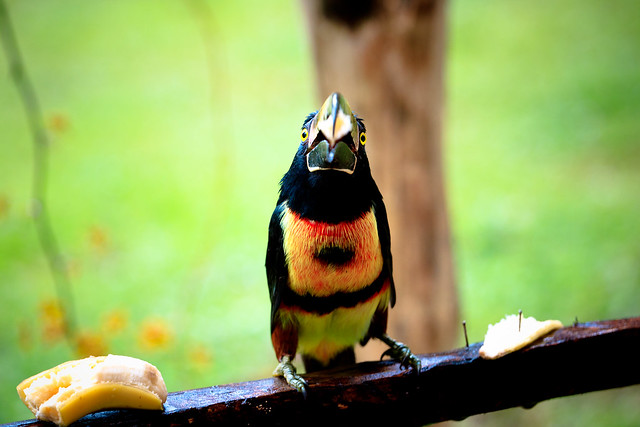 |
| Photo by Aidan Jones |
It is possible to train your parrot once you stick to a couple of simple steps. Anytime "school is usually in" to the parrot, it's always best to take your bird from his or her parrot cage and work in a small low-noise space. Your parrot might be more likely to be receptive and remember instruction when it is inside a new surrounding. The other challenge you ought to try, do away with pretty much all disturbances in your house. When your parrot has become diverted during the training, it won't be taught well. This indicates that you need to power down radio stations, television, and possibly even the handset. Also, realize that parrots are much just like children. They've got very short attention spans, for this reason, small exercise sessions are usually beneficial.
Additionally, begin to set up your parrot's training program time near to their life schedule, not yours. Following a treat is actually, the perfect time with regard to training since your parrot would be content and definitely will be aware. Your parrot will take delight in plenty of compliments. Even though you may find that you have not been successful, don't allow your bird to realize your levels of stress get higher. This will make it a distressing experience relating to your bird and you'll have a harder time helping your bird involved in learning later on in life.
If you find yourself willing to teach your parrot a fresh, new trick, your pet parrot will obey well to sweets and as well as rewards. Remember the fact that almost all creatures react much better to compliment as compared to punishment. Attempt to avoid hitting your parrot, even if they are behaving mischievously. Ignoring this behavior will be your very best wager whenever training your pet parrot. Birds do not understand punishment or unfavorable reinforcement. In reality, if you actually react to your parrot's inappropriate behavior, your pet might actually notice this as praiseworthy attention. Remember the fact that while your parrot will enjoy food treats as rewards, try to accentuate the favorable and boost effective conduct with lots of rewards and playtime. Otherwise, your parrot may only execute the tricks you desire them to be able to when some kind of food reward can be acquired.
Repetition is actually the key to successfully training your pet parrot. Repeating these types of basic steps repeatedly till your pet "gets" the technique is a good method to train your parrot to perform. This will work nicely with regard to basic instructions and superior tricks. If you have just gotten your pet parrot, begin out with very easy tricks, for instance teaching your parrot to sit on your hand on demand. Choose a word for each trick and employ it whenever you train. Above all, never ever force your parrot to train. If you realise your parrot is usually exhausted or maybe uninterested, then halt and try out again yet another time.
When your parrot learns way more instructions together with tricks, you can start shifting your training program closer and closer to the bird's cage. As they start to get better at their new skill, they may feel safe executing in his or her cage and additionally in the hustle and bustle within your home. Birds quickly learn more likely than not, and often by merely tuning in when they are not in training, that might result in humiliation to you if he or she learns something inappropriate.
Teaching a parrot will take a good deal of time and determination. You will need to really enjoy your parrot and furthermore need a great deal of your time and commitment. if you want to make this particular loving relationship worthwhile. Thanks to patient exercise along with love, you have a really good and well-behaved pet that is along with you for a very long time into the future
Jerry Kum - ArticleSource: GoArticles
|














